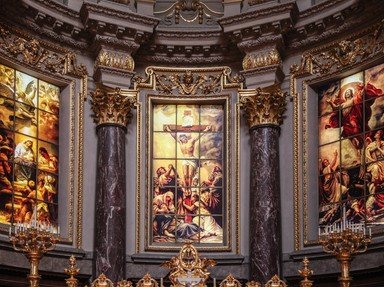Quiz Answer Key and Fun Facts
1. Swedish nun Elizabeth Hesselblad founded a new order of the Bridgettine Sisters but is particularly remembered for her work to protect the lives of Jews during the Second World War. What other honour was she awarded for her heroism?
2. Saint Teresa of Calcutta, better remembered by many people as Mother Teresa, was canonised in 2016. Which organisation did she found that required its members to vow to give "wholehearted free service to the poorest of the poor"?
3. Jose Sanchez del Rio was 14 years old when he was executed for refusing to renounce his Catholic faith. His death took place during the Cristero War, a rebellion in support of religious freedom that took place from 1926 to 1929 in which country?
4. Brother and sister Francisco and Jacinta Marto claimed to have witnessed appearances of the Virgin Mary at a location which, as a result of their experiences, became an important pilgrimage destination. Where were they from?
5. Saint Manuel Miguez Gonzalez was a Spanish priest who founded the Calasanzian Institute (also known as the Daughters of the Divine Shepherdess) in 1885 to promote the education of which group of people?
6. In 2018 Pope Francis canonised one of his predecessors in the papacy. Who was this pope who had been responsible for implementing the reforms of the Second Vatican Council and promoting better ecumenical communication and cooperation?
7. Saint Oscar Romero was assassinated in 1980 following his outspoken criticism of government repression, social injustice, human rights violations and persecution of the church. He was the archbishop of which world capital city?
8. Saint Vincenzo Romano - nicknamed "The Worker Priest" for his efforts to help the poor - was also instrumental in organising the work required to rebuild his home town of Torre del Greco following which disaster?
9. Noted for his contributions to literature, religious music and education, what was the name of the 19th century English cardinal who was canonised by Pope Francis in October 2019?
10. Founded in 1959 by Saint Dulce of the Poor, the non-profit organisation Obras Sociais Irmã Dulce (known in English as the Charitable Works Foundation of Sister Dulce) is a major provider of health care and education in the state of Bahia in which South American country?
Source: Author
Fifiona81
This quiz was reviewed by FunTrivia editor
looney_tunes before going online.
Any errors found in FunTrivia content are routinely corrected through our feedback system.
